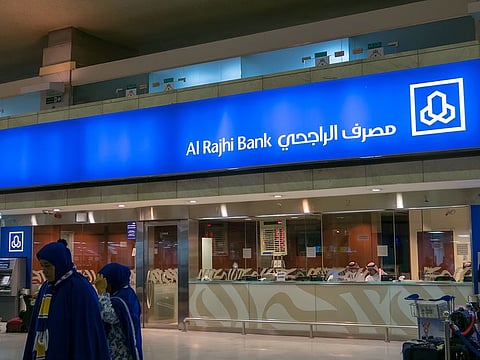Saudi Arabia’s Al Rajhi Bank ticks all the financial benchmarks
Saudi mega-bank has done well by working on its cost-to-income and more

Saudi Arabia’s Al Rajhi Bank (ARB) is at the forefront of the Middle East banking sector and one of the largest banks in the world by market cap, which stands at SR302.80 billion. The dividend per share in 2023 is expected to be SR1.9.
As such, the bank has a forward dividend yield of 2.5 per cent. The Sharia-compliant bank boasts a robust balance-sheet that is growing at the swiftest pace of 27 per cent year-on-year relative to peers, with total assets worth SR741 billion. It commands a near 25 per cent market share in domestic loans and deposits. Al Rajhi Bank has an extensive network of 500 branches and over 4,500 ATMs catering to more than 13 million retail customers.
Financial Performance
The bank delivered a stellar performance in the first nine months of 2022, primarily through a sturdy financing portfolio that grew 32 per cent year-on-year to S 557 billion and 40 per cent mortgage growth. The non-retail book grew 65 per cent supported by strong corporate and SME growth. Revenues surged 13 per cent to SR21.3 billion.
Tightening liquidity and stiff competition exerted near-term pressure on net interest margins. Nevertheless, the margin outlook has improved given the likelihood of its fixed-rate credit exposure undergoing repricing in H2-2023. Furthermore, ARB’s cost-to-income ratio declined to 25.6 per cent, making it the most cost-efficient bank in the Kingdom.
Deal spree
Last month, the Saudi Company for Exchanging Information Electronically (Tabadul) partnered with ARB to issue its first end-to-end electronic bank guarantee via a digital product called ‘Wthaq’. This will help the companies provide premium financial solutions to the banking sector in the Kingdom. The initiative is part of ARB’s goal to digitize cross-border letters of credit.
Recently, ARB also landed a credit facility deal worth SR2 billion from Saudi real estate developer Roshn.
Short-term outlook
While the bank is primarily focused on mortgages, it is diversifying the revenue mix through sustainable sources of finance such as Tier 1 Sukuk-issuance program, ESG loan syndicates, and mortgage-backed securities. Although this entails higher margin costs and greater capital expenditure, it will help the bank manage growing interest rate risk and facilitate asset growth.
As such, the bank is employing internally generated capital towards these growth drivers over delivering capital returns through dividends. Capital retention is allowing ARB to further maximize near-term credit-exposure gains.
The bank possesses best-in-class asset quality with a sound capital ratio of 19.6 per cent, well above the regulatory minimum. It enjoys a competitive edge given the minimal cost of risk on a low-default retail-loan portfolio. Moving forward, Al Rajhi Bank is more inclined to deploy cash into corporate floating loans.
This will offer the dual benefit of cutting asset duration while easing capital requirements. ARB is also tapping into the corporate customer base by enhancing its treasury offerings. Overall, the bank offers the highest return on equity of over 20 per cent per annum in the medium term relative to other large banks operating in the Kingdom. The growing strength of the Saudi economy in conjunction with a stable banking sector bodes well for the company’s growth prospects.
Sign up for the Daily Briefing
Get the latest news and updates straight to your inbox




